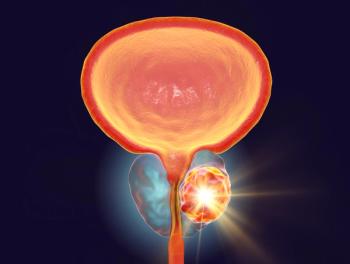
- ONCOLOGY Vol 14 No 12
- Volume 14
- Issue 12
Management of Advanced/Metastatic Prostate Cancer: 2000 Update
Over the past several years, the clinical presentation of prostate cancer has evolved so that more patients than ever before are presenting with clinically localized disease. However, a significant number of men continue to
An estimated 180,000 cases of prostatecancer will be diagnosed in the United States in the year 2000, with 32,000 menprojected to die from their disease, making it the most commonly diagnosedcancer in men and the second leading cause of cancer death in men. Despite itshigh incidence, we are only beginning to understand the clinical and biologicalbehavior of this disease. The last 10 years have seen an explosion in ourunderstanding of the biology of prostate cancer, and in the development of newtreatments. However, our understanding of this disease is confounded by the factthat treatment is constantly changing.
Treatment Options Evolving Slowly
Because of the long natural history of prostate cancer, it maytake years or even decades before randomized clinical trials provide definitiveanswers to the more important questions. Concepts about the treatment of thisdisease that were once so firmly heldeg, delaying hormonal therapy until apatient is symptomatic, using maximal androgen blockade, and accepting theineffectiveness of chemotherapy for last-stage diseasehave given way to newerconcepts of early hormonal therapy, intermittent blockade, and the fact that weare at least able to palliate with chemotherapy a significant number of patientswith hormone-refractory disease.
The common wisdom that patients be told either that they willdie with their prostate cancer and not from it or that they aretoo sick to be offered effective therapy no longer holds true. In fact, in twohormonal studies separated by 2 decades, the percentage of patients dying fromprostate cancer increased from 41% to 67%. It is clear that the long naturalhistory of prostate cancer will become a more significant factor as lifespan isextended by improvements in other medical fields, such as cardiovasculardisease.
Drs. Hussain and Dawson present an excellent, comprehensivereview of advanced prostate cancer management, covering all areas of care andencompassing the biology of the disease. An especially welcome feature of thisarticle is that both laboratory and clinical advances in the disease aredescribed.
Treatment Dilemmas
Controversies surrounding treatment of this disease will grow asadvances in basic science are brought into the clinic. What is clearly needed isa means of rapidly integrating molecular observations made in the laboratoryinto clinical practice. This is particularly relevant for studies evaluating theuse of adjuvant chemotherapy or hormonal therapy after definitive local therapy.
The natural history of the disease is measured in years ratherthan months, and an evaluation of treatments using the gold standard of survivalas an end point will not be available for clinical decisions for years to come.Are there any markers that will help select the patients who would benefit mostfrom early hormonal therapy? Is the paradigm of adjuvant chemotherapysosuccessful in breast cancerapplicable to prostate cancer? A betterunderstanding of the biology of the disease might help us answer these questionsin a timely fashion.
The clinician currently has more options available for thetreatment of hormone-refractory disease. These include secondary hormonalmanipulations (ketoconazole [Nizoral]/hydrocortisone, antiandrogens),chemotherapy, bisphosphonates, and isotopes. However, we still do not know theoptimal time and sequence for these treatments. Which patient will respond tosecondary hormonal manipulations? Should chemotherapy be reserved for thesymptomatic patient or should it be administered when prostate-specific antigen(PSA) levels begin to rise? Should bisphosphonates be administered? Again, toanswer these questions expeditiously without large numbers of patients is adifficult prospect.
SWOG Study
Tissue, serum, and imaging correlates may help provide answersmore quickly. For example, the intergroup Southwest Oncology Group study SWOG99-16, a randomized trial comparing mitoxantrone (Novantrone) and prednisone toestramustine (Emcyt) and docetaxel (Taxotere) in hormone-refractory prostatecancer, had been amended to examine biological markers such as p53, insulin-likegrowth factor (IGF), and HER2 in the serum, as well as various pro- andantiapoptotic proteins in tissue. The results may shed more light on the bestways to use chemotherapy and design future trials.
Articles in this issue
about 25 years ago
Colorectal Cancer: Chemotherapy Treatment Overviewabout 25 years ago
Irinotecan in Esophageal Cancerabout 25 years ago
Irinotecan in the Management of Patients With Pancreatic Cancerabout 25 years ago
Developments in the Treatment of Gastric Cancer in Europeabout 25 years ago
The Evolving Role of Irinotecan: A Broad-Spectrum Chemotherapeutic Agentabout 25 years ago
Thalidomide in Hematologic and Oncologic DiseaseNewsletter
Stay up to date on recent advances in the multidisciplinary approach to cancer.
















































































